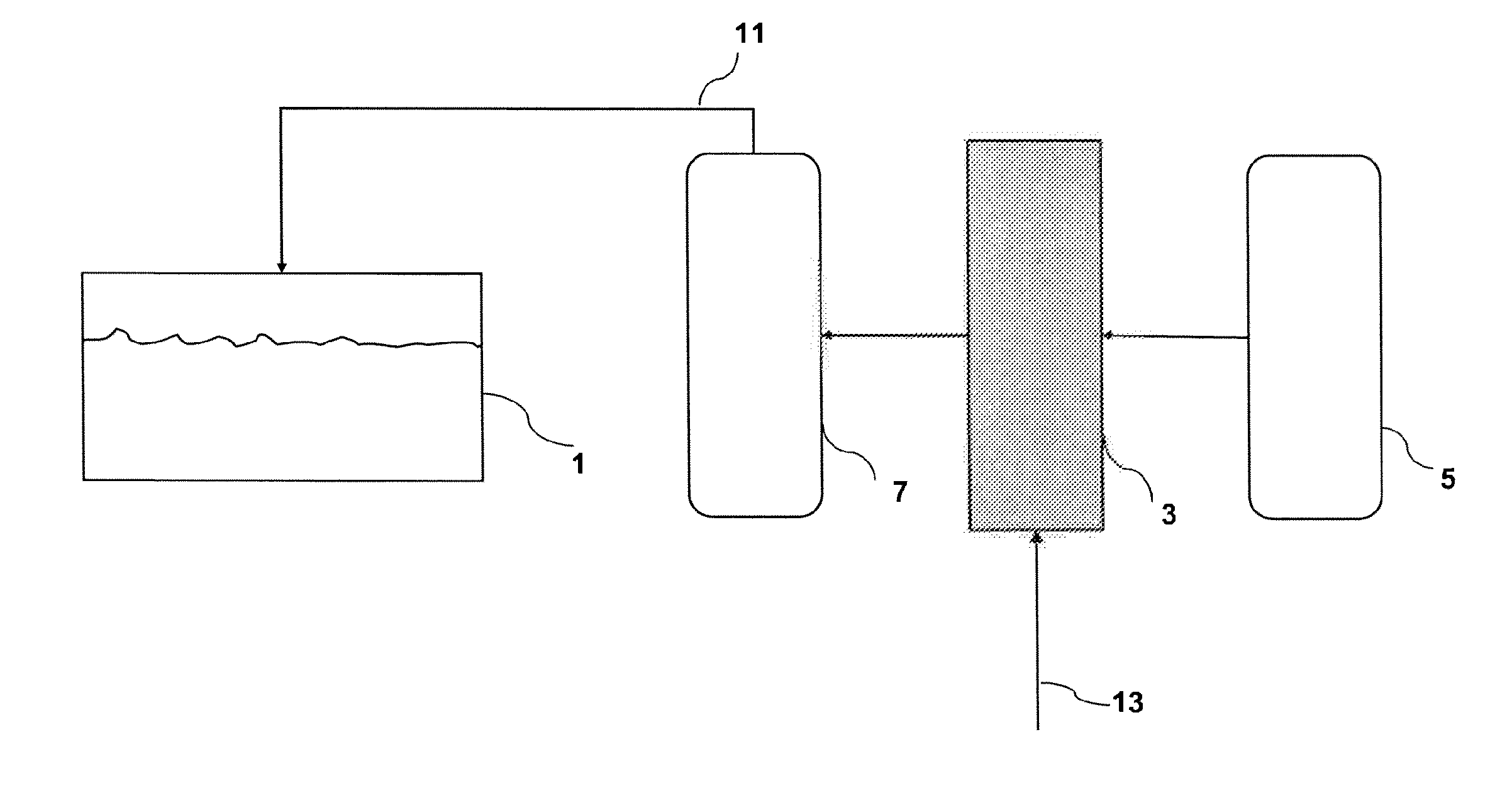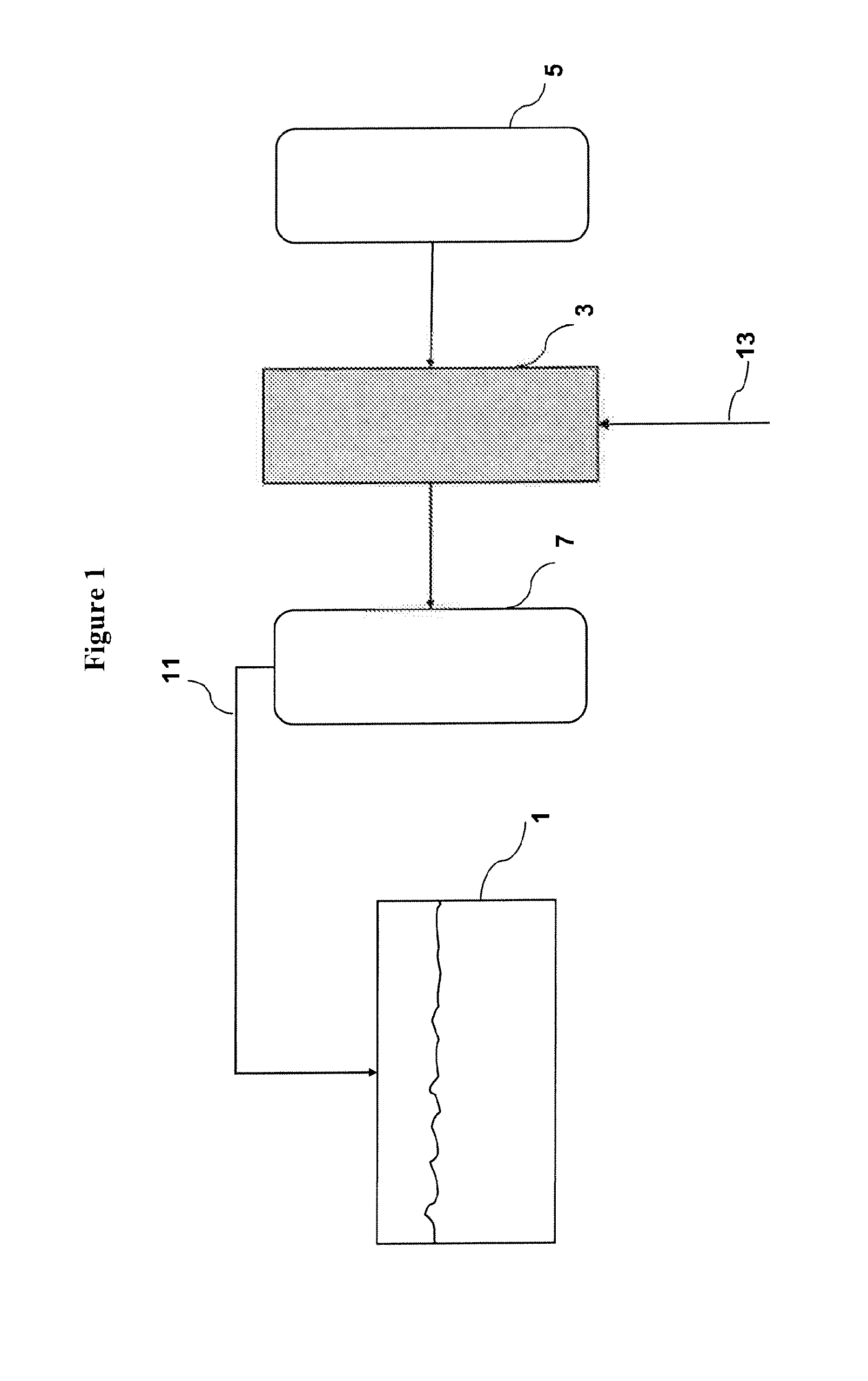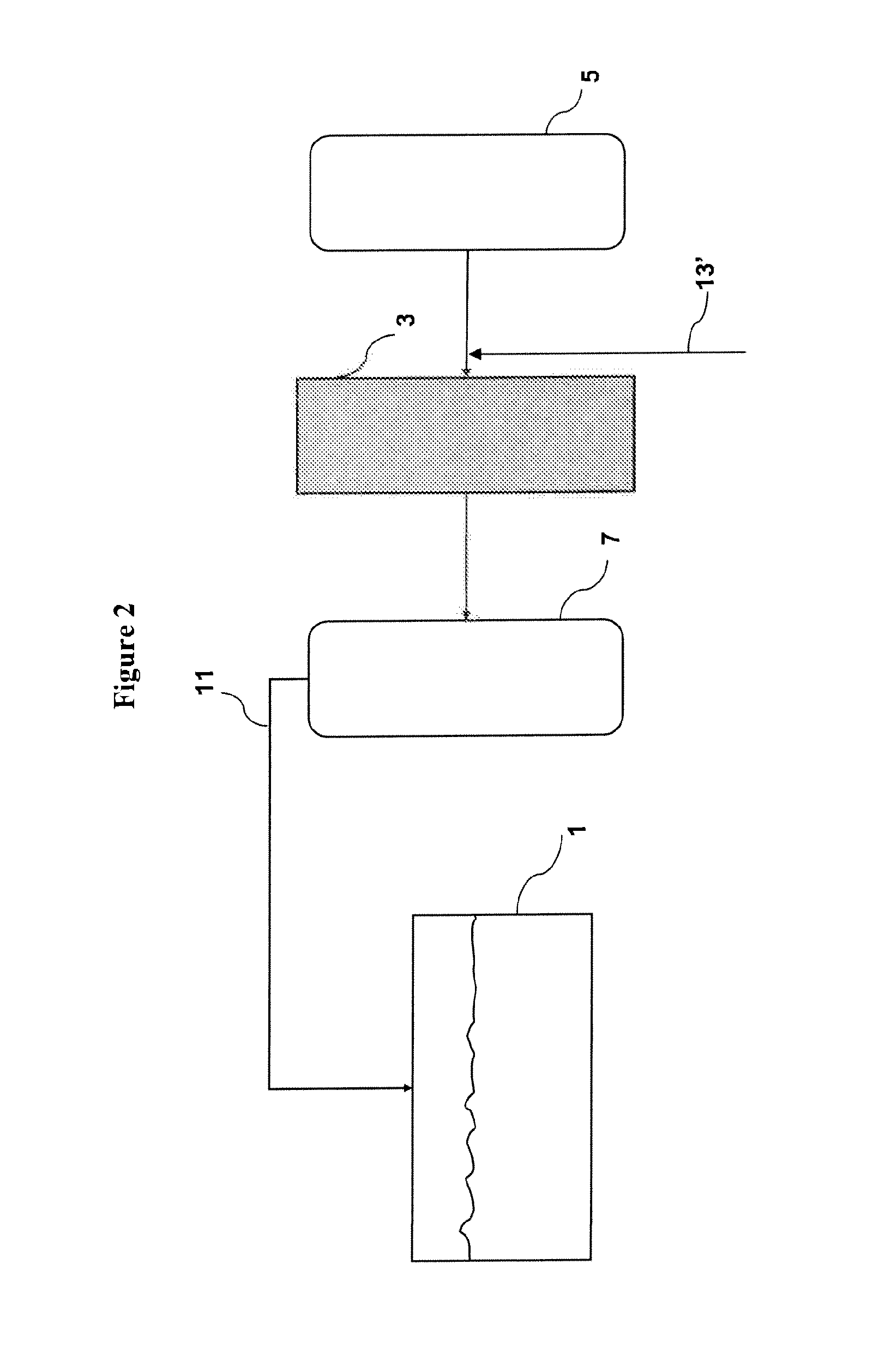Reactive component reduction system and methods for the use thereof
a technology of reactive components and reduction systems, applied in the direction of physical/chemical process catalysts, gas-gas reaction processes, separation processes, etc., can solve the problems of complex setup and significant cost of operation
- Summary
- Abstract
- Description
- Claims
- Application Information
AI Technical Summary
Benefits of technology
Problems solved by technology
Method used
Image
Examples
Embodiment Construction
[0015]In accordance with the present invention, there are provided systems for reducing the concentration of one or more reactive component(s) in a vapor phase fluid prior to introduction thereof into a container having fuel therein, thereby reducing the concentration of reactive component(s) in said vapor phase fluid below the concentration at which auto-ignition may occur when said vapor phase is introduced into said container. Invention systems comprise:
[0016]said container, and
[0017]a fluid treating zone comprising:[0018]at least one inlet,[0019]at least one outlet, and[0020]a reaction zone, wherein said reaction zone provides conditions suitable to deactivate said one or more reactive component(s) when contacted therewith,
wherein only the outlet of said fluid treating zone is in fluid communication with the container, such that the inlet of said fluid treating zone has no communication with the container or contents thereof. Such systems are especially useful in applications wh...
PUM
| Property | Measurement | Unit |
|---|---|---|
| temperatures | aaaaa | aaaaa |
| temperatures | aaaaa | aaaaa |
| temperatures | aaaaa | aaaaa |
Abstract
Description
Claims
Application Information
 Login to View More
Login to View More - R&D
- Intellectual Property
- Life Sciences
- Materials
- Tech Scout
- Unparalleled Data Quality
- Higher Quality Content
- 60% Fewer Hallucinations
Browse by: Latest US Patents, China's latest patents, Technical Efficacy Thesaurus, Application Domain, Technology Topic, Popular Technical Reports.
© 2025 PatSnap. All rights reserved.Legal|Privacy policy|Modern Slavery Act Transparency Statement|Sitemap|About US| Contact US: help@patsnap.com



